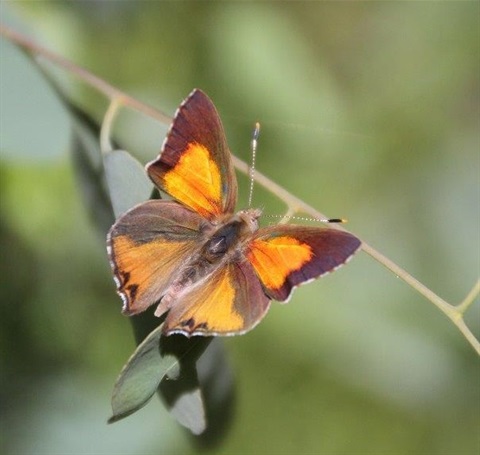Planting a Butterfly Garden

It is important to attract butterflies to our gardens because they help with eco-system function by pollinating flowers. They also provide a link in the food chain with the caterpillars being eaten by birds.
Creating a butterfly garden is very easy. Butterflies need a sheltered position away from wind with flat rocks for sunning themselves, making them more active. They also need essential salts so create mud puddles or place moist sand in a bird bath.
It is important to provide nectar plants to provide them with sugar for energy. The colours butterflies prefer are yellow, purple, orange, red and pastels. They need shallow-throated flowers or flat-topped blossoms so they can reach the nectar.
Plants with a large number of flowers are loved by butterflies as they are easy to find and make good ‘nectar traps’. Local native plants suitable for this purpose are Brachyscome, Acacias, Dillwynia, Bulbine bulbosa, Vittadinia, Eucalyptus, Helichrysums, Bursaria spinosa (particularly for the Eltham Copper Butterfly) and Pomaderris.
Host plants are also needed for the female butterflies to lay their eggs on. These plants provide undisturbed areas for breeding and food for caterpillars before they start to pupate. Plants suitable for this purpose are Bursaria spinosa, Eucalyptus, Leptospermums and Correas.
Caterpillars also like to feed on grasses, so any of the Poas, Autrodanthonias, Themeda triandra, Austrostipa and Dichelachne crinita would be suitable. Also Mat Rushes (Lomandra species). Get used to having caterpillars eating your plants if you want butterflies and do not use insecticides as this will kill them.
Happy butterfly gardening.